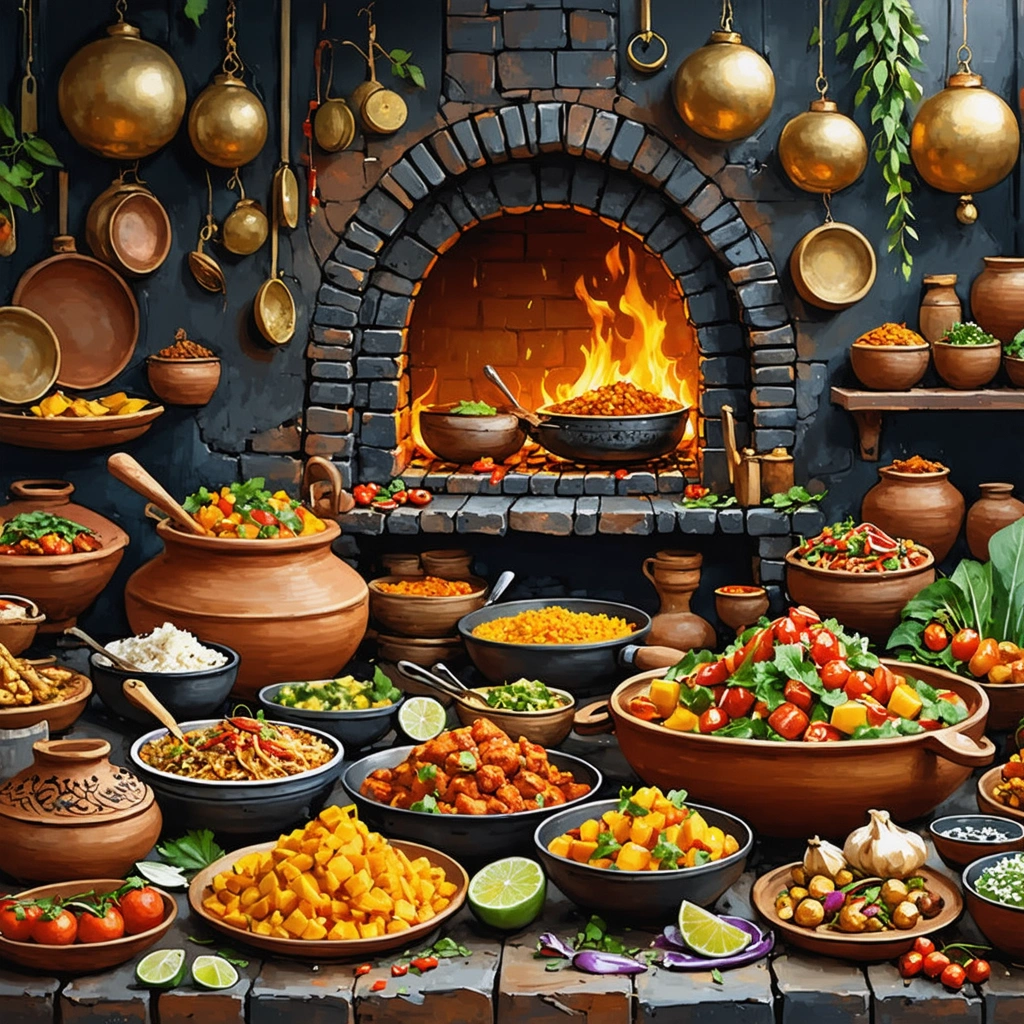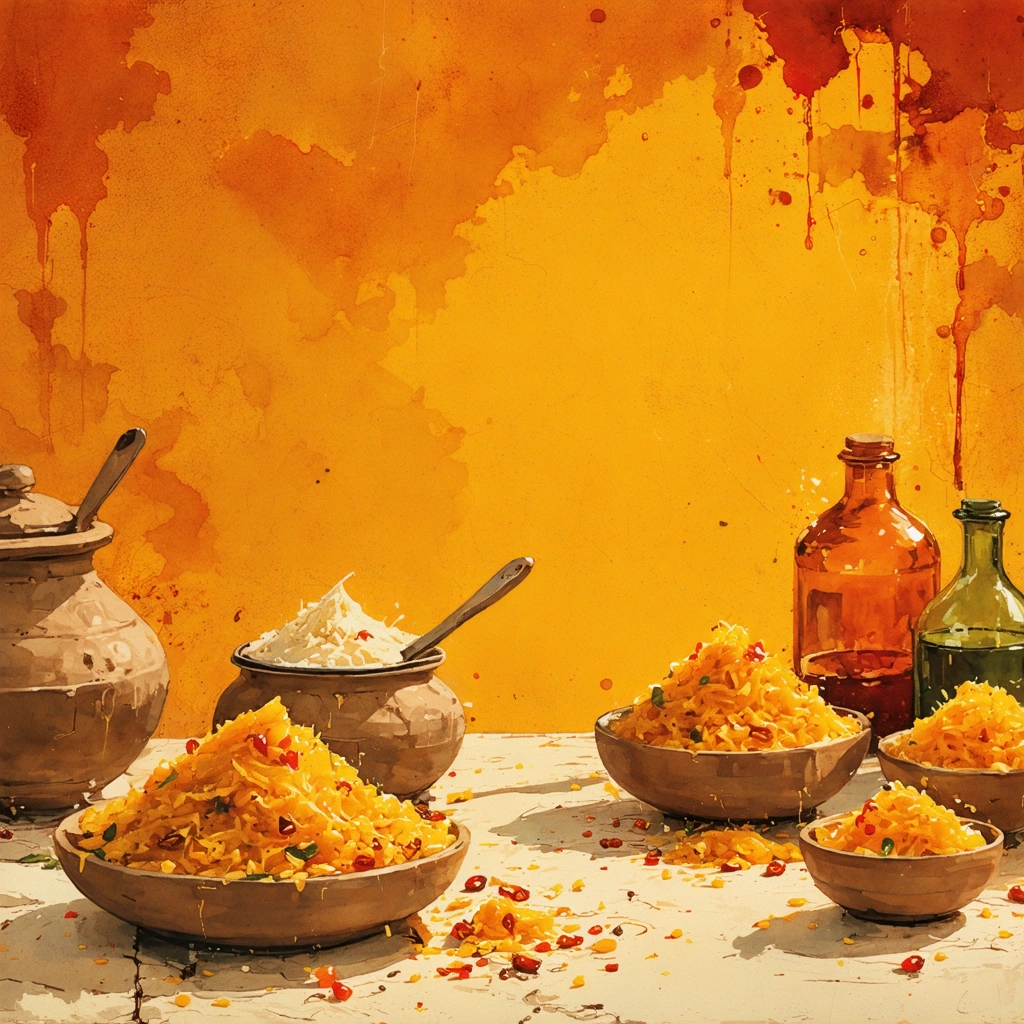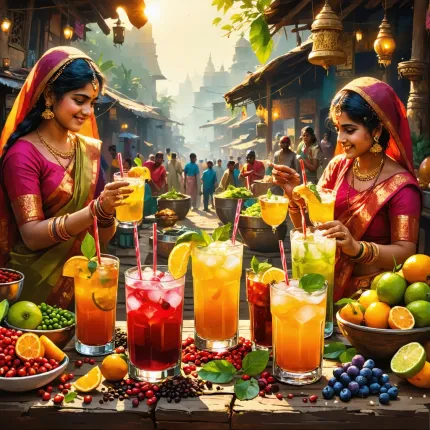
Imagine sitting down to a meal that tells the story of thousands of years, a tapestry woven from centuries of cultural exchanges, local ingredients, and intricate cooking techniques. Traditional Indian cuisine is not just about food; it is an immersive experience that transports you across the vast subcontinent, from the deserts of Rajasthan to the lush fields of Punjab, the tropical coasts of Kerala to the vibrant streets of Kolkata. Yet, in today’s fast-paced world, where convenience often trumps heritage, many rich culinary traditions risk fading into the background. Authentic dishes like Dal Bati Churma, Moong Dal Halwa, and Gajar Ka Halwa—each a jewel in India’s gastronomic crown—are sometimes overshadowed by modern, globalized food trends.
Why We’re Losing Touch with India's Culinary Heritage
Have you ever noticed how the menu of your local Indian restaurant often features a handful of popular dishes repeated ad infinitum? While favorites like Butter Chicken and Naan have earned their place worldwide, there is a vast ocean of regional delicacies that remain underappreciated or even unknown to many. This narrowing of focus is not just a matter of taste preferences; it reflects a broader disconnect between contemporary lifestyles and traditional food cultures.
Urbanization, busy schedules, and the rise of fast food culture have all played a role in pushing time-intensive recipes to the sidelines. The soulful Dal Bati Churma, for instance—a Rajasthani staple that combines spicy lentil curry with baked wheat balls and a sweet crushed wheat mixture—is a dish that demands patience and a deep understanding of balancing flavors. Similarly, desserts like Moong Dal Halwa and Gajar Ka Halwa, which require slow cooking and careful attention to texture, have become rare treats rather than everyday indulgences.
Moreover, the globalization of food has introduced homogenization, where unique tastes and local ingredients are replaced by standardized recipes designed for mass appeal. This results in a loss not only of flavor depth but also of cultural identity embedded in each regional dish. What’s at stake is more than just culinary diversity; it’s the preservation of history, community, and tradition handed down through generations.
Rediscovering the Magic of Regional Indian Flavors in 2025
But there’s a growing movement pushing back against this trend, fueled by food enthusiasts, chefs, and cultural custodians who recognize the priceless value of traditional Indian cuisine. In 2025, savoring authentic regional dishes is becoming a celebrated act—an opportunity to reconnect with India’s rich heritage through its food. This resurgence is not just about nostalgia; it’s about embracing the complexity, nutrition, and stories that each recipe carries.
Consider Dal Bati Churma once again—not merely a meal but a cultural ceremony. It’s a dish that brings people together, symbolizing the hearty spirit of Rajasthan’s desert communities. The preparation itself is an art form, with bati dough baked to a golden crisp, dal simmered to perfection, and churma sweetened with jaggery and ghee. This dish teaches us about balance—between savory and sweet, hard and soft textures, and the interplay of spices that awaken the palate.
Equally enchanting are the desserts that round off many traditional Indian meals. Moong Dal Halwa, with its rich, nutty flavor and velvety texture, is a dessert that originated in the royal kitchens but has since found its way into the hearts of many households. The slow roasting of yellow lentils combined with ghee, sugar, and cardamom releases an aroma that is both comforting and indulgent. Meanwhile, Gajar Ka Halwa, a carrot-based sweet cooked with milk and nuts, offers a seasonal delight that is as nutritious as it is delicious, embodying the warmth of Indian winters.
In this article, we will journey through the vibrant landscape of India’s regional culinary traditions, exploring the origins, ingredients, and cultural significance of iconic dishes like Dal Bati Churma, Moong Dal Halwa, and Gajar Ka Halwa. We will delve into how these recipes have evolved, how they are celebrated across different states, and why they deserve a cherished place on our plates today and beyond.
Whether you are a curious foodie, a heritage seeker, or someone looking to deepen your appreciation of Indian culture, this guide aims to reignite your passion for traditional Indian cuisine. By the end, you’ll not only appreciate the flavors but also understand the stories and craftsmanship that make these dishes timeless treasures.

Exploring Traditional Indian Cuisine in 2025: A Journey Through Regional Flavors
What defines traditional Indian cuisine and why is it important to savor these regional culinary traditions in 2025?
Traditional Indian cuisine is a rich tapestry of diverse flavors, ingredients, and cooking techniques that have evolved over centuries across India’s varied regions. Each state and community brings unique dishes that reflect local produce, climate, culture, and historical influences. In 2025, savoring these regional culinary traditions is more important than ever as globalization risks homogenizing food cultures, and there is a growing movement to preserve and celebrate authentic, heritage recipes.
Understanding traditional Indian cuisine is not just about tasting food; it’s about connecting with the stories, rituals, and identities embedded in each dish. For example, the Rajasthani dish Dal Bati Churma combines lentil curry (dal), baked wheat balls (bati), and a sweet crushed wheat mixture (churma), representing the desert region’s resourceful use of ingredients with minimal water. This dish exemplifies how traditional food is adapted to environmental conditions and local tastes.
What are some iconic dishes that best represent India’s regional culinary diversity?
India’s vast geography and cultural diversity mean there are hundreds of traditional dishes, each with a distinct taste and preparation method. Here are a few examples that highlight regional specialties:
- Dal Bati Churma (Rajasthan) – A hearty, rustic meal combining protein-rich lentils with baked wheat balls and a sweet counterpart, illustrating the balance of flavors and textures.
- Moong Dal Halwa (North India) – A decadent dessert made from moong dal (yellow lentils), ghee, sugar, and nuts, showcasing the northern penchant for rich, slow-cooked sweets, often served during festivals and celebrations.
- Gajar Ka Halwa (Punjab and Northern India) – A beloved carrot-based sweet pudding made with grated carrots, milk, sugar, and cardamom, highlighting seasonal produce and traditional dairy usage.
These dishes not only satisfy the palate but also tell stories of regional agriculture, climate, and cultural preferences, making them essential to understanding Indian culinary heritage.
How are traditional Indian dishes like Dal Bati Churma prepared, and what makes them unique?
Preparation methods are critical to the authenticity and flavor of traditional Indian dishes. Taking Dal Bati Churma as an example:
- Dal: Typically a mix of lentils such as toor dal and chana dal cooked with aromatic spices, tempered with mustard seeds, cumin, garlic, and sometimes asafoetida.
- Bati: Wheat flour dough is shaped into balls and traditionally baked in a clay oven (tandoor) or over firewood, giving a smoky flavor and firm texture.
- Churma: Made by crushing baked bati and mixing it with ghee and jaggery or sugar, creating a sweet contrast to the savory dal and bati.
This combination of textures and flavors—savory, smoky, and sweet—makes Dal Bati Churma unique. The cooking techniques emphasize slow cooking and layering of flavors, which are hallmarks of Indian culinary tradition.
What role do desserts like Moong Dal Halwa and Gajar Ka Halwa play in Indian culinary traditions?
Desserts such as Moong Dal Halwa and Gajar Ka Halwa hold a special place in Indian cuisine, often associated with celebrations, festivals, and special occasions. These sweets are not only delicious but also nutritionally rich, combining lentils or vegetables with dairy and nuts.
Moong Dal Halwa’s preparation involves soaking, grinding, and slow-roasting moong dal in ghee, which requires patience and skill, resulting in a deeply flavorful and aromatic dessert. Its richness symbolizes prosperity and joy in many North Indian festivities.
Similarly, Gajar Ka Halwa uses fresh carrots cooked slowly in milk and sugar, finished with cardamom and nuts to enhance its aroma and texture. This dessert celebrates seasonal produce and traditional dairy farming practices, emphasizing freshness and wholesome ingredients.
How is the appreciation for traditional Indian cuisine evolving in 2025, and what trends are shaping its future?
In 2025, there is a notable resurgence in interest toward traditional and regional Indian cuisine, fueled by several trends:
- Farm-to-table and local sourcing: Consumers are increasingly valuing fresh, locally sourced ingredients, which aligns with the essence of traditional Indian cooking.
- Health-conscious adaptations: While preserving traditional flavors, many chefs are adapting recipes like Dal Bati Churma or halwas to reduce fat or sugar content without compromising authenticity.
- Culinary tourism: India is seeing growth in food tourism, with travelers eager to experience authentic dishes in their regional contexts, often guided by expert chefs and culinary historians.
- Digital preservation and storytelling: Online platforms and social media are amplifying knowledge about traditional dishes, cooking methods, and the cultural significance behind them, making these traditions accessible globally.
These trends contribute to a deeper, more sustainable appreciation of India’s culinary heritage, ensuring that dishes like Dal Bati Churma, Moong Dal Halwa, and Gajar Ka Halwa continue to delight and educate future generations.
How can one authentically experience and cook traditional Indian dishes at home in 2025?
To authentically experience traditional Indian cuisine at home, consider the following steps:
- Source authentic ingredients: Use regional spices, lentils, and dairy products from trusted suppliers or specialty Indian grocery stores.
- Learn traditional techniques: Many dishes require specific preparation methods, such as slow roasting bati or slow-cooking halwa, which can be mastered through cooking classes or online tutorials.
- Respect cultural context: Understand the cultural significance of each dish, which can enhance your appreciation and guide appropriate presentation and serving methods.
- Experiment mindfully: While adapting recipes for dietary needs or ingredient availability is common, try to maintain core flavors and textures to preserve authenticity.
For example, making Dal Bati Churma at home can be a rewarding experience that connects you to Rajasthani culture. Similarly, preparing Moong Dal Halwa or Gajar Ka Halwa during festivals can enrich your celebrations with traditional flavors and meanings.
Conclusion
Traditional Indian cuisine is a vibrant, evolving aspect of India’s cultural identity. Dishes like Dal Bati Churma, Moong Dal Halwa, and Gajar Ka Halwa are not only culinary delights but also storytellers of geography, history, and social customs. As we move through 2025, embracing these regional culinary traditions offers a delicious way to preserve heritage, foster cultural understanding, and enjoy some of the world’s most diverse and flavorful foods.


